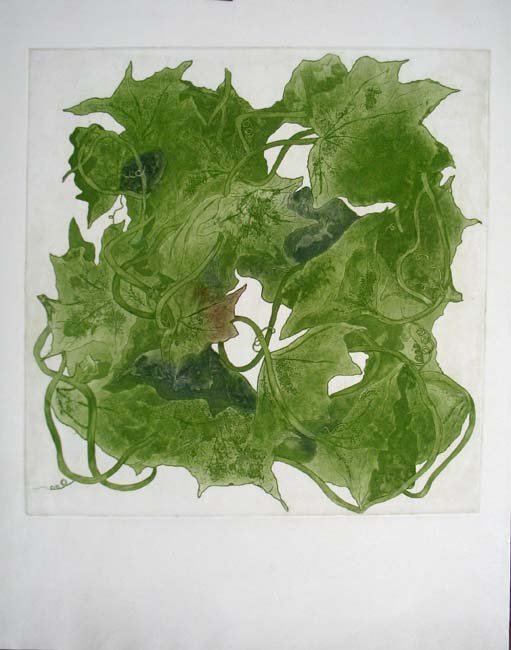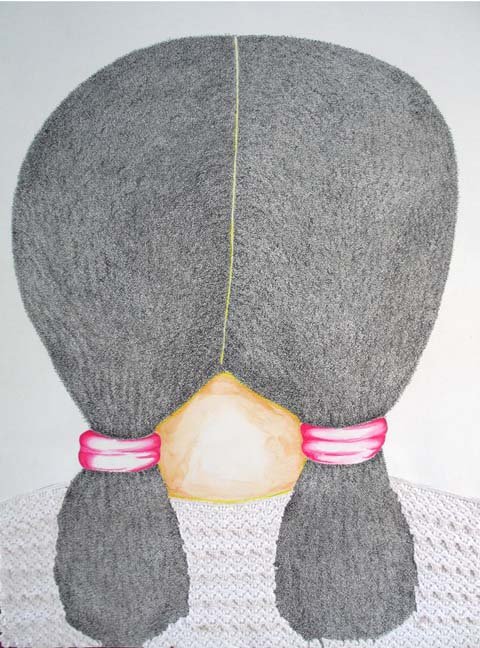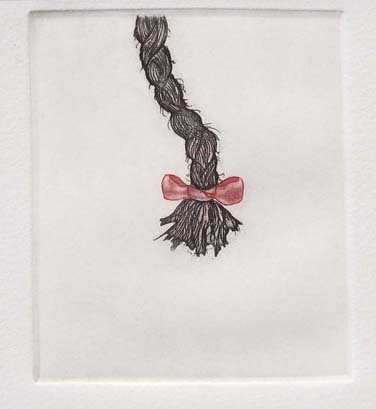
Conflicts Within - Rima Kundu
August 16 - August 28, 2010 at Akar Prakar, Kolkata
The twenty-first century ushered as much transformations in the world wide socio-cultural scenario as it did to individual relationships.
However, subjectivity with its adjunct quotient of womanhood, in the region of Bengal, is yet to cross the borders of a perfunctory affiliation to related experiences of homemaking, although in actuality of lived ambience and functioning, the domain of women in Bengal has widened significantly to relatively expansive proportions.
It is from the vantage point of reconstituted social relationships, and restructured subject-positions, that women artists from Bengal now proceed to showcase their art-practice, and intervene through participation in exhibitions, art camps, seminars, and workshops, raising voices against varied manifestations of gender bias, social suppression and violence. In the process, she emerges as a highly informed and self-consciously confident individual, who engages with the act of visual representation of womanhood with a distinctly political edge. The said process may not always manifest as a resolved equation, but is rather marked by varied forms of inner conflict — a conflict within the self — and it is this is epicentre around which the world of Rima Kundu currently revolves.
As an artist, Rima is acutely conscious of her gendered identity, and prefers to communicate her concern through objects commonly associated with the conventional Bengali woman’s home-bound domain of existence. These associations tend to assume a nearly-iconic status within the varied modes of representational strategies. Rima projects the woman within herself as a strong self-identity, as she adopts the conventional tool of the sewing needle and traditional form of embroidery to work in conjunction with print making or painting — or more significantly, in full-blown autonomy of a chosen/preferred mode and medium. When she proceeds to embroider on the so-called “Nepali” paper, fixing delicately shining glass beads, and subsequently frames and exhibits them as works-of-art, it not only indexes her individual sensibility, but also her consciousness of a larger field of perception, the socially determined traditional domain of woman. She aligns with the syntax of contemporary visual art practices, where the concept of singular ‘purity’ of medium is increasingly being rejected through dissolving of mediumistic boundaries.
The images in the present exhibition are utterances that voice these polar dichotomies — the conflicts that Rima has been experiencing and trying to negotiate within herself.
Rima’s diversion from an earlier celebrative mode to the current one of conflicts, is perhaps best visible in the work titled Fear within. Formally and linguistically, Fear within shares the same characteristics of its hitherto celebratory counterparts. However, as we are coaxed into “read”-ing the Bengali phrase-fragments inscribed into the work, the proportionately enlarged safety-pin, sealing the thoracic region into a closed privacy begins to assume distinct semiotic significance. Its vertical, piercing action indicates a duality between its role in sealing up, despite a vulnerability as a not-so-difficult device to unlock. The image records a potential contradiction between a shielded self and the trauma of violation.
On the other hand, An unpleasant truth is a successful exercise in the impact of the minimal. The grinding stone, a common kitchen apparatus prior to ubiquitous electric mixer-grinders of today, doubles up to implicate the monotony of daily schedules for one who is trapped exclusively within the home-making function. Hung on the wall as a form constituting a pictorial representation, the vertical orientation of the grindstone could take on associative implications beyond the visibly apparent, even read in terms of a token protest through rejection.
The much used cooking-gas cylinder in An endless journey, carries signs of weariness from the monotony of domestic chores. It is left to the element of fancy to liberate oneself from the same, such that golden Chinese clouds pass over the battered lower half of the metal cylinder, while a wishful pair of polka-dot stuffed-heart aspire towards the alleviating tenderness of relational intimacy.
Rima’s yearning for Kolkata is nowhere more transparently visible than in the city map road routes she emulates in several of her works. From Do not touch any unclaimed object, to Stitching an unknown journey, and Home relocated Rima comes full circle to her desire for the urban ambience she has been desperately missing.
Despite physically relocating her ‘home’, her spiritual address continues to be Care of Kolkata — the conflict she is negotiating within herself.
Nandini Ghosh
Rima Kundu | You don't know the other | Etching | 19.5 x 19.25 in
Rima Kundu | Untitled | Mixed media | 13.75 x 9.75 in
Rima Kundu | Something behind it | Etching | 19.75 x 19.75 in
Rima Kundu | Secret of a good recipe (set of 8) | Mixed media | 17 x 16 in
Rima Kundu | Scroll out | Mixed media | 33 x 27 in
Rima Kundu | Now make a composition | Mixed media | 23 x 12.5 in
Rima Kundu | Mapping of hidden weapon | Mixed media | 60.5 x 39 in
Rima Kundu | Looking Beyond | Etching | 9.25 x 8 in
Rima Kundu | Home relocated | Mixed media | 35 x 35.5 in
Rima Kundu | Hair raising story (triptych) | Mixed media | 71.5 x 78 in
Rima Kundu | Hairdo - 2 | Mixed media | 27.5 x 19.75 in
Rima Kundu | Hairdo | Mixed media | 27.5 x 19.75 in
Rima Kundu | Hair splitting | Etching | 4 x 3.5 in
Rima Kundu | Good Morning India | Etching | 8 x 8 in
Rima Kundu | Feel at Home | Mixed media | 2o x 29 in
Rima Kundu | Fear Within | Mixed media | 48 x 29 in
Rima Kundu | Don't touch an unclaimed object | Mixed media | 44.5 x 33.5 in
Rima Kundu | Dichkaoun | Mixed media | 56 x 59.5 in
Rima Kundu | Care of Kolkata | Mixed media | 17 x 39 in
Rima Kundu | Can't make mistake| Mixed media | 14.25 x 10 in
Rima Kundu | Breaking News | Mixed media | 37.5 x 25.5 in
Rima Kundu | Bathed in Rain | Etching | 7.75 x 6 in
Rima Kundu | An Unpleasant truth | Etching | 17.75 x 10 in
Rima Kundu | An endless journey | Mixed media | 54 x 28.5 in
Rima Kundu | A Hankie | Etching | 4.5 x 4.5 in
Rima Kundu | Howzat | Mixed media | 14 x 33 in
Rima Kundu | Secret in life | Mixed media | 46 x 29 in
Rima Kundu | Stitching an unknown journey | Mixed media | 22 x 60 in
Rima Kundu
Rima Kundu born in 1974 is an artist who lives and works in Santiniketan and who completed her B.V.A. (print making) from Rabindra Bharati University, Kolkata and her M.F.A. (print making) from M.S. University, Baroda. She was also awarded the Elizabeth Green Shields Award in Print Making, Canada (1999).
Kundu has shown at various exhibitions in India and abroad including National Gallery (Sri Lanka), Gallery Art Today (Delhi), Gallerie 88 (Kolkata), Karnataka Chitrakala Parishad (Bangalore), Gandhara Art Gallery (Kolkata), Visual Art Gallery, India Habitat Centre (New Delhi) and Akar Prakar (Kolkata).



























